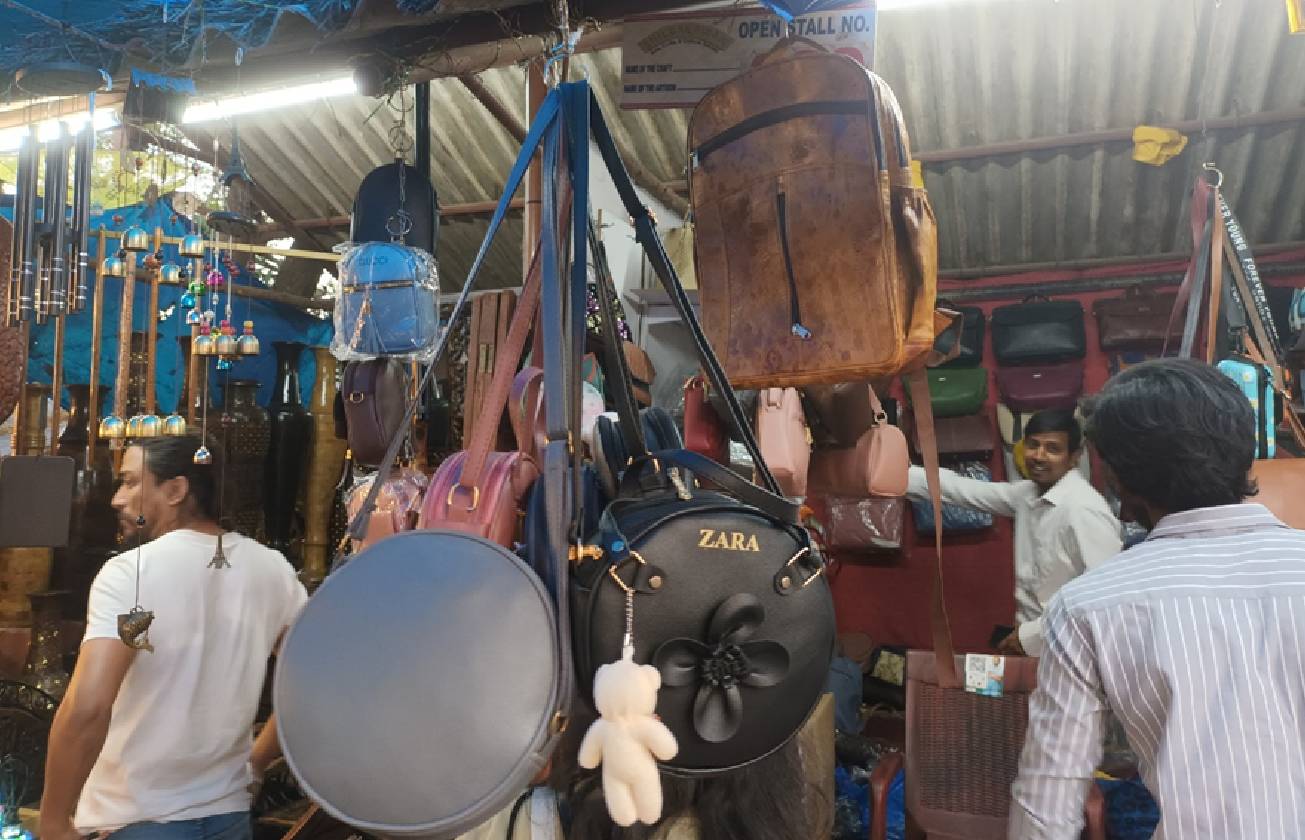During our trip to Hyderabad as part of the D-Tour Program (2022), we visited ‘Shilparamam’, an arts and crafts mela that was happening there during our visit.
We found many attractive and skillfully crafted art pieces, most of which were hand-made. Some of the pieces intrigued us by their elaborate and intricate designs and some others stood out by their simple minimalistic look.
It was fascinating to imagine how much manual effort would have gone into each of the pieces and was also very inspiring for us.
But there was also something else I noticed. One bag was hanging on display with ‘ZARA’ written on it. Of course I’ve seen many copies of famous branded products being sold by local sellers. But this time it just got me thinking.
It didn’t seem to me as a mere matter of copying someone’s identity. There is another issue lying underneath.
The problem is that small scale manufacturers and craftsmen feel that their business and products are not good enough for the market. They consider their quality inferior in the global market.
They believe that the only way to sell their products successfully is to use the name of largely established brands that have managed to attract the majority of the consumers today.
Now, the reason for imitating other brands may be a lack of support and opportunity to grow and establish their own business or, these sellers might be unwilling to work hard and are looking for a shortcut to success. It’s debatable and worth investigating. But if the former is true, there need to be platforms or modes to promote these local businesses.
We as consumers are also responsible for this.
We should make a bold decision to try products from the many small businesses who are at a nascent stage in their business. If the product is not good enough, give them feedback and create room for improvement.
And another very common scenario that you can see in local markets and crafts shops is, “Bhaiyya, 100 rupees is too much, give it for half the price!”
Recall the last time you ate at a fancy five-star restaurant or the last time you shopped at a mall.
Did you bargain there in the same way?
No!
Because we obey the fixed prices of the store.
We convince ourselves that the price we pay is worth the ‘brand’ and ‘in-store experience’
As a result, these famous brands get more confidence, earn well and grow their business further.
Now, coming back to the former scenario.
Are we completely aware of the process of making that product that we buy from the local businesses and craftsmen? Are we aware of the amount of skill needed, the amount of manual labor required and the amount of creativity required?
We are not aware!
“I think it’s fair to say that we don’t have the right to decide the price for a thing that we don’t know the value of.”
If the ‘in-store experience’ can have a price to it, so can creativity of craftsmen.
And the effects of bargained sales are very significant for small scale businesses, if 70 of the 100 customers bargain, imagine the losses incurred by the seller. It will collapse the business and may even cost them their livelihood.
Not so the case in multi-national brands. A few bargains out of a huge number of sales is not going to render the CEO homeless.
“Think twice before the next time you bargain with a craftsman.”
Let’s motivate emerging businesses and encourage genuine and skilled artisans in our country.
Let’s work towards flooding the markets with numerous proud and original brands competing equally.
By:
Madhumathi.S
(1st year Communication Design)


